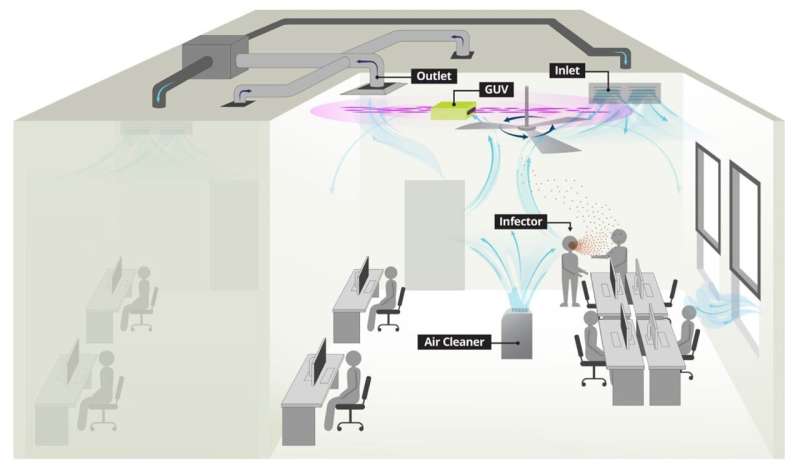Indoor air-cleaning strategies are key to minimizing virus spread

Along with vaccines, masks, and testing, indoor air hygiene and building engineering controls will be key to slowing the spread of airborne, highly infectious variants of COVID-19.
In a recent review in the journal Indoor Air, researchers at the Department of Energy's Lawrence Berkeley National Laboratory (Berkeley Lab) presented a thorough review of the state of the science for several key strategies to reduce airborne infection risk using building controls—ventilation, filtration, airflow management and disinfection by germicidal ultraviolet (UV) light.
"We found strong evidence that indoor environmental controls can be effective against transmission. Implementing building controls effectively and at scale while considering operational challenges and energy costs are critically important to support in-person activities in our schools, offices, and other types of indoor spaces where people gather," said Berkeley Lab researcher Rengie Chan.
Chan and colleagues used a computer simulation to demonstrate how various building control adjustments affected transmission risk at the nearby, room-scale, and building-scale levels. Respiratory aerosols, which can carry viruses, mix throughout a room in minutes; however, they can be substantially removed from the room by ventilation or filtering the air within the room, reducing exposure. In addition to engineering controls, maintaining even 2-3 feet of personal space substantially reduces the potential for direct transfers from one person to another.
Effective building controls can take many forms. Ventilation can be achieved by opening windows and increasing outdoor airflow through an HVAC system. Filtration may involve upgrading HVAC filters to a higher efficiency rating or using standalone or portable air cleaners. Cost-effective, whole-room disinfection is possible through the use of germicidal UV light, which is currently underutilized but has previously been effective in interrupting the spread of measles during school outbreaks.
"These viruses are carried in respiratory fluid particles invisible to the naked eye, which can remain suspended in the air for minutes to hours, and can be inhaled by others sharing the air in an indoor space," said the project's environmental health epidemiologist Jacob Bueno de Mesquita. "The key is to reduce inhalation exposure to the virus. Even if viral exposure cannot be eliminated entirely, lowering exposure may help decrease the risk of infection or the severity of any potential illness."
More information: P. Jacob Bueno de Mesquita et al, Control of airborne infectious disease in buildings: Evidence and research priorities, Indoor Air (2021). DOI: 10.1111/ina.12965




















